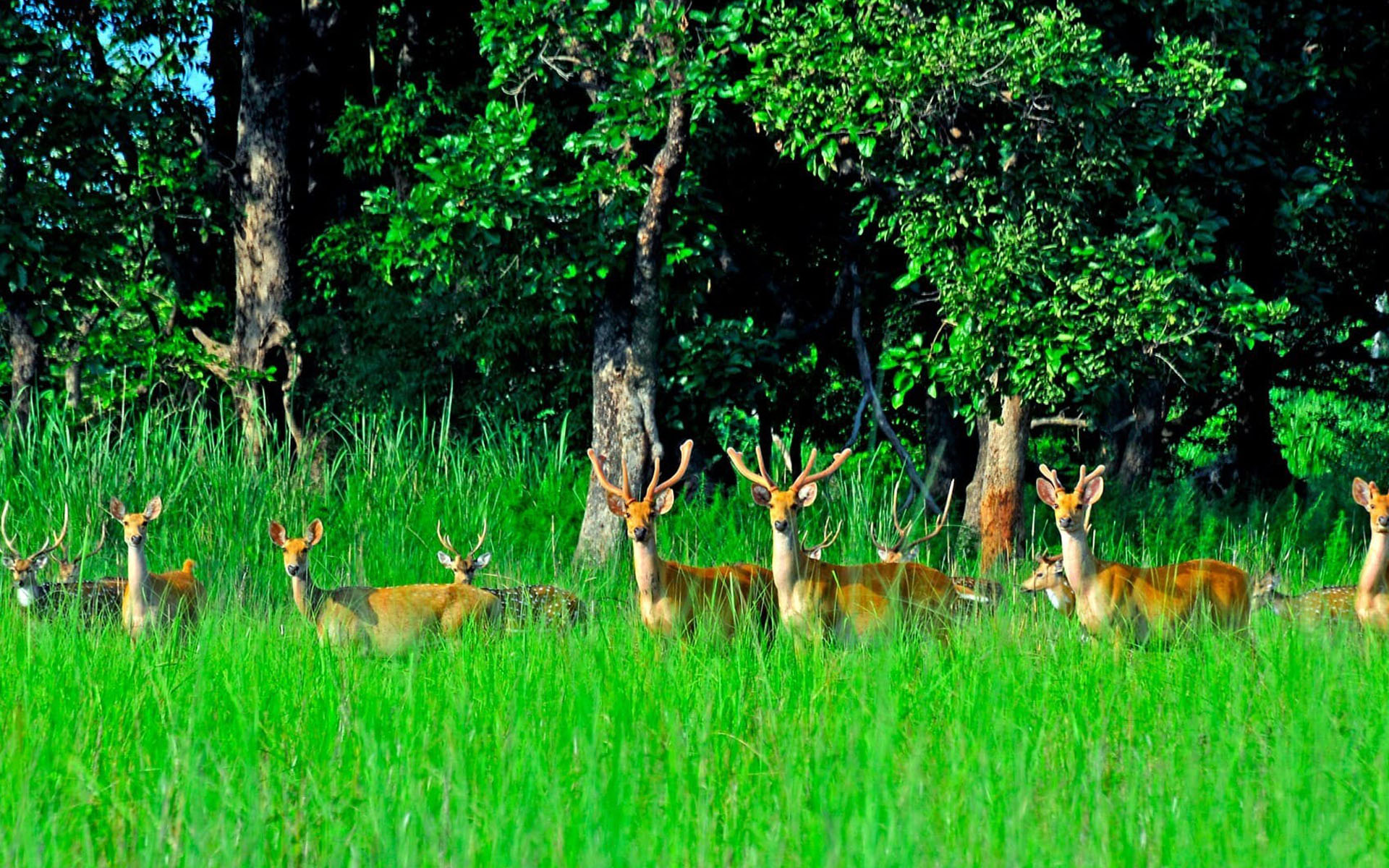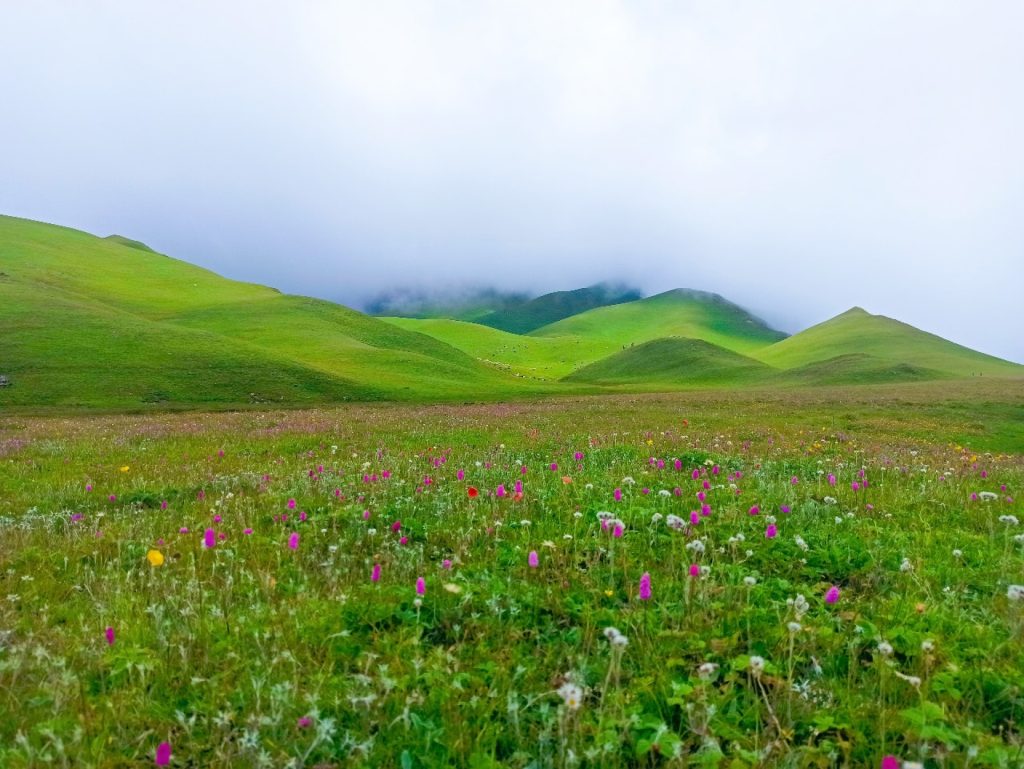
Sudurpaschim Province, often called the Sundarpaschim, is Nepal’s westernmost province, stretching from the flat tropical Terai to the towering Himalayas. Covering 19,539 sq. km, the province consists of nine districts – Kailali, Kanchanpur, Dadeldhura, Doti, Achham, Bajura, Bajhang, Baitadi, and Darchula. Its terrain is divided into three belts: mountains (40.6%), mid-hills (34.5%), and Terai plains (24.8%).
This province borders Uttarakhand and Uttar Pradesh of India, and Tibet in the north, making it a culturally diverse and strategically located region. With a population of over 2.5 million, Sudurpaschim is multi-ethnic, including Tharu, Dotyali, Khas Arya, and Sauka communities, who contribute vibrant traditions, festivals, and hospitality.
Despite being historically labeled as remote and underdeveloped, the region is rich in natural beauty, wildlife diversity, cultural heritage, and adventure opportunities. With rivers like the Mahakali, Seti, and Karnali, pristine lakes, high Himalayan peaks, and sacred pilgrimage centers, it offers everything from eco-tourism to spiritual tourism.
Sudurpaschim is divided into three strategic tourism zones:
With new infrastructure development, cross-border connectivity, and branding campaigns like Sundar Sudurpaschim, the region is poised to become Nepal’s next mega tourism hub.
1. Khaptad National Park: Meadows of Spiritual Serenity: Spanning across four districts (Bajhang, Bajura, Doti, Achham), Khaptad National Park is one of Nepal’s most scenic protected areas. Known for its rolling grasslands, rhododendron forests, and 224 species of medicinal plants, it is both a natural and spiritual hub. The park is associated with Khaptad Swami, a sage who meditated here for nearly five decades. Trekkers can enjoy pristine landscapes, spot musk deer and Himalayan black bears, and experience the annual Khaptad Festival, which blends nature, spirituality, and local traditions.
2. Shuklaphanta National Park: Grasslands of the Terai: Located in Kanchanpur, Shuklaphanta is famous for having the world’s largest herd of swamp deer (barasingha). The park also shelters tigers, elephants, and over 400 species of birds, making it a paradise for wildlife enthusiasts. Jeep safaris, birdwatching, and guided tours showcase the beauty of its vast grasslands (phanta). The nearby Dodhara-Chandani suspension bridge, stretching 1.46 km across the Mahakali River, adds to the adventure.
3. Ramaroshan, Achham: The Land of Lakes and Meadows: Often called the “Lake District of the Far West,” Ramaroshan boasts 12 lakes and 18 lush meadows. Located at elevations between 2,050–3,792 meters, it is ideal for camping, nature walks, and photography. The site also holds religious significance, with legends linking it to Lord Shiva and Parvati. From Ramaroshan, visitors can enjoy panoramic views of Api and Saipal Himal.
4. Api Himal Base Camp: Adventure into the Unknown: Standing at 7,132 meters, Mt. Api is the tallest peak in Sudurpaschim, located in Darchula’s Api Nampa Conservation Area. The trek to Api Base Camp is less explored but spectacular, passing through remote Byasi villages, subtropical forests, alpine meadows, and glacial rivers. The conservation area shelters endangered species like snow leopards and musk deer while preserving the unique cultures of the Sauka (Byasi) people. For adventure seekers, Api Base Camp offers a true wilderness trek.
5. Badimalika Temple, Bajura: Pilgrimage in the Clouds: Perched at 4,200 meters, Badimalika Temple is one of the most revered Hindu shrines in western Nepal. Every year during Janai Purnima, thousands of pilgrims trek here from Nepal and India to seek blessings. The journey to Badimalika passes through wildflower-strewn meadows, alpine pastures, and Himalayan ridges, making it both a spiritual and natural retreat.
6. Ghodaghodi Lake, Kailali: A Ramsar Wetland: Recognized as a Ramsar site, Ghodaghodi Lake is a complex of wetlands and forests rich in biodiversity. Covering 2,563 hectares, it shelters 148 bird species, 27 fish species, and rare reptiles like pythons and tortoises. The lake is also considered sacred by the Tharu community, who perform rituals during festivals. It is an emerging spot for eco-tourism, birdwatching, and cultural tourism.
7. Saipal Himal Base Camp – Majestic Mountain Trails: At 7,031 meters, Saipal Himal in Bajhang is another Himalayan giant of Sudurpaschim. Its base camp trek takes visitors through Dotyali villages, forests, and high pastures, offering spectacular mountain views. Unlike the crowded trekking routes of eastern Nepal, Saipal remains untouched and serene.
8. Surma Sarovar Lake, Bajhang – A Hidden Gem: Located at 4,300 meters, Surma Sarovar Lake is associated with the goddess Surma Devi. Local belief holds that a dip in the lake fulfills wishes and cures ailments. Each July, the Birijaat festival gathers pilgrims here, blending spirituality with breathtaking Himalayan scenery.
9. Tikapur Park, Kailali: A Cultural Retreat: Built during King Mahendra’s reign, Tikapur Park is Nepal’s largest park, offering heritage, food, and adventure experiences. Once used by the king for recovery, it is now a recreational hub filled with gardens, picnic areas, and Tharu cultural shows.
10. Cultural and Community Experiences: Beyond landscapes, Sudurpaschim offers immersive cultural tourism:

Sudurpaschim holds immense tourism potential. Yet, it remains underpromoted and underdeveloped compared to central and eastern Nepal. The region struggles with limited infrastructure, weak connectivity, and a lack of investment. Still, the opportunities are vast. The province can grow as a hub for adventure tourism with rafting in the Karnali and Mahakali rivers, trekking, and paragliding in mid-hill and high-hill districts.
Eco-tourism has huge scope through expanded protected areas and community-led initiatives. Cultural tourism can be boosted by promoting indigenous traditions, festivals, and rituals. There is also high potential for wellness and agro-tourism, including meditation retreats and organic farming experiences. With proper investment, sustainable practices, and digital promotion, Sudurpaschim can emerge as a premier global tourism destination.
Sudurpaschim is truly a land of contrasts. It stretches from lush Terai plains to mystical mid-hills and snow-capped Himalayan peaks. The province offers everything: wildlife safaris in Shuklaphanta, spiritual solace in Badimalika, serene meadows in Khaptad, and thrilling treks to Api and Saipal. Still largely unexplored, the Far West remains Nepal’s hidden gem. For travelers seeking authentic culture, untouched wilderness, and unique spiritual experiences.
Sudurpaschim is more than just a destination. It is a journey into Nepal’s most beautiful secrets.